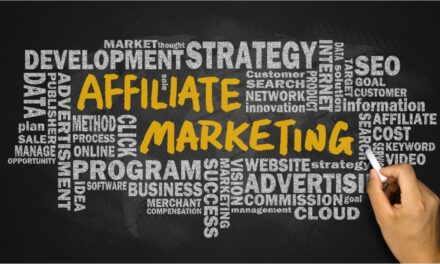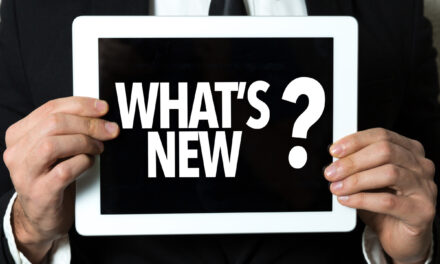Introduction
As a marketer or business owner, you’re well aware of the importance of persuasive sales copy. The words you use to communicate with your audience can make or break your marketing efforts, playing a crucial role in the buyer’s journey. With the right copy, you can persuade potential customers to choose your product or service over the competition. In this blog post, I will share valuable insights and strategies to help you write sales copy that not only grabs attention but also drives conversions.
I. Understanding your target audience
Before you start crafting your sales copy, it’s essential to understand your target audience. This knowledge will enable you to tailor your message to address their needs effectively.
A. Creating customer personas
A customer persona is a fictional representation of your ideal customer, based on real data and market research. Developing personas helps you better understand your audience, enabling you to create content that resonates with them.
To create customer personas, gather information about your customers, such as demographics, interests, and behaviors. You can obtain this data through surveys, interviews, and analytics tools.
B. Identifying customer pain points
A pain point is a problem or need your target audience experiences. By identifying these pain points, you can craft your sales copy to address them directly, showing your potential customers how your product or service can alleviate their problems.
To identify pain points, consider the following methods:
- Customer feedback: Read reviews and comments to discover common issues.
- Industry research: Analyze trends and reports to identify pain points in your niche.
- Social media listening: Monitor social media platforms to see what your target audience is discussing.
C. Tailoring your message to address their needs
Once you have a clear understanding of your target audience, use this knowledge to tailor your sales copy to address their specific needs. Speak directly to their pain points and present your product or service as the ideal solution.
II. The AIDA model for persuasive sales copy
The AIDA model is a widely-used framework for writing persuasive sales copy. It consists of four stages: Attention, Interest, Desire, and Action.
A. Attention
Your sales copy must grab your audience’s attention, as they’re constantly bombarded with information. To stand out, consider the following techniques:
- Crafting powerful headlines: Your headline should be concise, compelling, and convey a clear benefit. Use numbers, questions, or strong adjectives to create curiosity and draw readers in.
- Using compelling visuals: Images and videos can quickly grab attention and communicate your message effectively. Select visuals that are relevant, high-quality, and emotionally engaging.
B. Interest
Once you’ve captured your audience’s attention, you need to keep them interested. To do this:
- Storytelling and case studies: Share relatable stories or case studies that showcase your product or service in action. This helps readers envision how your offering can benefit them.
- Presenting benefits over features: Focus on the benefits your product or service provides rather than listing its features. Explain how your offering will improve your customers’ lives, solve their problems, or meet their needs.
C. Desire
To create a desire for your product or service, foster an emotional connection with your audience. Achieve this by:
- Fostering emotional connections: Use language that evokes emotions like trust, excitement, or relief. Show empathy towards your audience’s pain points and demonstrate your genuine desire to help.
- Employing persuasive language techniques: Use persuasive techniques such as scarcity, social proof, and reciprocity to influence your audience’s decision-making process.
D. Action
The final step is to prompt your audience to take action. To do this, make sure your sales copy includes:
- Clear calls-to-action (CTAs): Guide your audience toward the next step, whether it’s making a purchase, signing up for a newsletter, or downloading a resource. Use clear and concise language for your CTAs and make them visually distinct.
- Creating a sense of urgency: Encourage your audience to act quickly by emphasizing limited-time offers, exclusive deals, or dwindling stock. This sense of urgency can help drive conversions by prompting readers to take action immediately.
III. The power of social proof
Social proof is a powerful persuasion technique, as people tend to trust the opinions of others, especially when making purchasing decisions. Incorporate social proof into your sales copy to build credibility and trust.
A. Types of social proof
- Customer testimonials: Include genuine, relatable, and specific testimonials from satisfied customers to demonstrate the value of your product or service.
- Influencer endorsements: Partner with influencers or experts in your niche to endorse your product or service. This can boost your credibility and help sway potential customers.
B. Integrating social proof into your sales copy
To effectively use social proof, integrate it seamlessly into your sales copy. For example, you can:
- Add testimonials alongside your product or service’s benefits.
- Embed social media posts featuring customer reviews or influencer endorsements.
- Display trust badges, such as industry awards or certifications, to establish credibility.
IV. Overcoming objections and addressing concerns
Anticipating and addressing potential objections is crucial for persuasive sales copy. By providing answers to common concerns, you can alleviate doubts and encourage customers to convert.
A. Identifying common objections
Common objections might include price, product complexity, or concerns about quality. To identify objections specific to your offering, consider conducting surveys or analyzing customer feedback.
B. Providing evidence-based solutions
To address objections, provide evidence-based solutions that directly address the concern. For example, you can:
- Offer comparisons to demonstrate your product’s value and cost-effectiveness.
- Provide detailed guides or tutorials to simplify the user experience.
- Showcase product certifications, warranties, or satisfaction guarantees to reassure customers about quality.
C. Crafting a compelling guarantee
A strong guarantee can help alleviate concerns and increase conversions. Offer a risk-free trial, money-back guarantee, or hassle-free returns policy to instill confidence in potential customers.
V. Testing and optimizing your sales copy
To ensure your sales copy performs at its best, it’s essential to test and optimize it continuously.
A. A/B testing different elements
A/B testing involves creating two versions of a specific element and comparing their performance. Test headlines, CTAs, images, or other elements to determine what resonates best with your audience.
B. Analyzing performance metrics
Track performance metrics such as conversion rates, bounce rates, and time spent on page to gain insights into your sales copy’s effectiveness. Use this data to identify areas for improvement.
C. Implementing improvements based on data
Apply the insights gained from testing and analytics to refine your sales copy, continually optimizing for better results.
VI. Summary of Actionable Steps
To craft persuasive sales copy that converts, follow these actionable steps:
- Understand your target audience by creating customer personas and identifying their pain points.
- Use the AIDA model as a framework for your sales copy, focusing on Attention, Interest, Desire, and Action.
- Capture attention with powerful headlines and compelling visuals.
- Maintain interest through storytelling, case studies, and emphasizing benefits over features.
- Foster desire by creating emotional connections and employing persuasive language techniques.
- Encourage action with clear CTAs and a sense of urgency.
- Leverage social proof by including customer testimonials and influencer endorsements.
- Overcome objections by addressing concerns and offering compelling guarantees.
- Continuously test and optimize your sales copy using A/B testing and performance metrics analysis.
By implementing these steps, you’ll be well on your way to creating sales copy that not only engages your audience but also drives conversions and boosts your marketing success.
Conclusion
In conclusion, persuasive sales copy is essential for driving conversions and achieving marketing success. By understanding your target audience, using the AIDA model, incorporating social proof, addressing objections, and continually testing and optimizing, you can create sales copy that compels your audience to take action. I encourage you to apply these tips and share your success stories. Happy writing!











